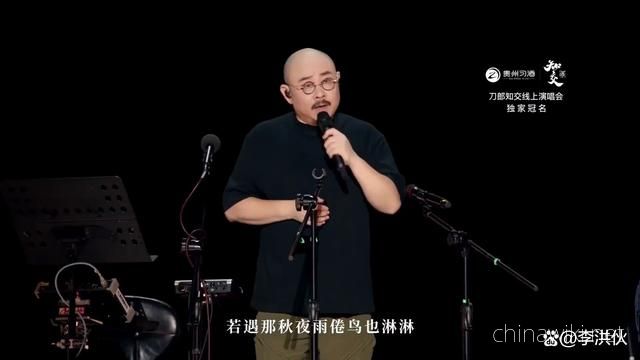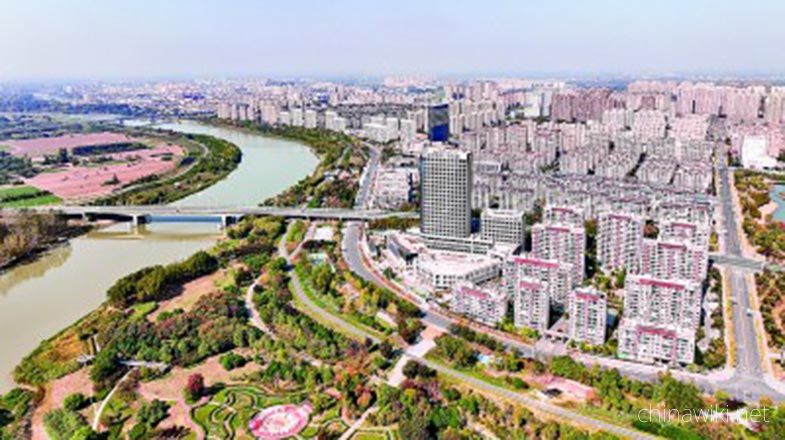Chinese Zongzi Culture and Customs
Zongzi belongs to a type of "zongzi", which is a tribute used by people to worship gods and ancestors during festivals. It is an ancient traditional custom to make zongzi to worship gods and ancestors during festivals. There are many varieties of zongzi, and different festivals will make different types of zongzi. Zongzi is a tribute to worship gods and ancestors during the Dragon Boat Festival.
At the end of the Eastern Han Dynasty, millet was soaked in ash water from plants and trees. Due to the presence of alkali in the water, millet was wrapped in bamboo leaves in a square shape and cooked to make Guangdong alkaline water zongzi. It is a traditional custom of our country to eat rice dumplings during the Dragon Boat Festival. Wrapping Zongzi mainly uses new leaves, Ruo leaves or Zizang reed leaves, collectively called Zongye. The traditional form of Zongzi is a triangle, which is usually named according to the inside.
Zongzi has many shapes, reflecting different regional characteristics. Zongzi not only has many shapes, but also has different varieties. Because of different flavors in different parts of China, there are mainly two kinds of dumplings: sweet and salty. Sweet flavors include white water zongzi, red bean zongzi, broad bean zongzi, jujube zongzi, rose zongzi, melon kernel zongzi, bean paste lard zongzi, jujube paste lard zongzi, etc. Salty flavors include pork dumplings, ham dumplings, sausage dumplings, shrimp dumplings, diced meat dumplings, etc., but pork dumplings are more common. There are also southern style new leaf egg yolk meat zongzi (Hainan), mixed zongzi, bean paste zongzi, winter mushrooms, etc; There is also a pair of sweet and salty zongzi with two flavors. These Zongzi have different flavors with different seasonings.
The Dragon Boat Festival diet of Zongzi is a traditional Chinese custom and a special seasonal food in China. However, there are different customs of eating Zongzi in other countries.
Shanghai
Cantonese Zongzi (that is, Cantonese Zongzi), represented by Xinghualou and Xinya Cantonese Restaurant, tastes soft and strong, with flat bottom, square and pentagonal shapes: one corner is upward, and the rest extends to four directions, in a pyramid shape. There are many kinds of Cantonese Zongzi, including chestnuts, fresh meat, egg yolks and mushrooms; Steamed zongzi include roasted duck, shiitake mushrooms, chestnuts, fresh meat, egg yolks, rice kernels, as well as alkaline water zongzi, bean paste zongzi, fresh meat and egg yolk zongzi, and red bean zongzi. Huaiyang characteristic Zongzi, represented by Laobanzhai and Yangzhou Hotel, is "eight flavors and eight styles". The authentic "small feet" white rice zongzi, quadrangular red dates and red beans zongzi, weight shaped egg yolk chestnut zongzi, yuan bao shaped ham and meat zongzi, triangular bean plate salty meat zongzi, pillow style fresh meat zongzi, long pillow chicken zongzi, and rhombic shaped bean paste zongzi are distinctive. The mushroom dumplings, bean board dumplings, bean paste dumplings, red beans and red dates dumplings, pine nuts and white rice dumplings and Arhat dumplings supplied by Gongdelin are all vegetarian. All kinds of Zongzi are different in variety, shape, taste and color. The large Cantonese wrapped pillow zongzi is 450g each, while the mini zongzi is only 25g each.
Nanjing
The traditional Zongzi in Nanjing has a very rich shape, mainly consisting of small foot zongzi, followed by pillow zongzi, triangle zongzi, quadrangle zongzi, axe zongzi, cylinder zongzi, and weight zongzi. The most commonly used leaf for Zongzi is reed leaf. As a place where the North and the South blend, Nanjing is inclusive in food and drink, with more Zongzi stuffing. The most traditional Zongzi in Nanjing is white glutinous rice zongzi, which is eaten with sugar after steaming.
Suzhou
Suzhou Zongzi is mostly long and thin quadrangle shaped, with fresh meat, jujube paste, bean paste, lard with sand and other varieties. It has the characteristics of exquisite ingredients and fine production.
Wuxi
Compared with Suzhou, the Zongzi in Wuxi is not so particular about the way of packaging or the materials used. From the way of making Zongzi, Wuxi people prefer to make Zongzi with small feet, triangular zongzi, etc. In terms of materials, most of the Zongzi eaten by ordinary families in Wuxi are red bean stuffing, white rice stuffing and meat dumplings. These fillings are relatively simple and have a long storage time.
Hangzhou
Hangzhou zongzi differs from Jiaxing zongzi and Huzhou zongzi in terms of appearance and tying method, forming its own style. Its representative is the "Tangqi Zongzi" from the century old Huichang store, which is mainly characterized by pork belly, Shaoxing wine, glutinous rice, green bamboo leaves, earthen stove, iron pot, and old soup cooking. There are also unique techniques for steaming and boiling Hangzhou zongzi, which require a particularly long time and emphasize that "a thousand rolls are better than a single serving.". Chen Guoming's poem "Eating Huichang Zongzi": "He is gentle and old in winter, but never poor in green clothes. He understands the real taste of the world, and Mijia's calligraphy and painting Huichang Zongzi."
Ningbo
Zongzi in Ningbo, Zhejiang Province is a quadrangle shaped rice dumpling, including alkaline water rice dumpling, red bean rice dumpling, red jujube rice dumpling, etc. Its representative variety, alkaline water zongzi, is made by adding an appropriate amount of alkaline water to glutinous rice and wrapping it with old yellow bamboo leaves. After cooking, the glutinous rice turns light yellow and can be dipped in white sugar for a delicious and fragrant taste.
Huzhou
Huzhou, located on the shore of the Taihu Lake Lake, has been a famous land of fish and rice since ancient times. Huzhou Zongzi is called pillow zongzi because of its pillow head shape. Some people also call it Meiren Zongzi because it has beautiful lines and is small and elegant.
Jiaxing
Jiaxing Zongzi is a quadrangle with fresh meat, bean paste, eight treasures and other varieties. For example, fresh meat dumplings often contain a piece of fat in lean meat. After Zongzi is cooked, the fat oil seeps into the rice, making the mouth fat but not greasy. The Zongzi is made from the high-quality sweet tea leaves of Wushan after boiling and extracting the juice. The Zongzi is golden and shiny in color, smooth and tender in the mouth, soft and viscous, fragrant in the teeth and cheeks, sweet in the aftertaste, greasy and easy to digest, nutritious and suitable for diabetics. Most places in Zhejiang, especially in the mountainous areas of western Zhejiang, have used sweet tea to cook Zongzi, tea rice and tea Congee for generations. The plot of Jia Baoyu's love for sweet tea and rice has been mentioned multiple times in the 62nd chapter of "Dream of the Red Chamber" and other plots.
Fuzhou
The Zongzi in Fuzhou can be divided into salty zongzi, plain alkaline zongzi, peanut alkaline zongzi, etc., which are the essential staple food on the table for worshipping ancestors on the Dragon Boat Festival. In terms of binding, it is important to coordinate and unify, with consistent sizes. Only one rope is used to tie in a string, usually ten in a string, and the head and tail are symmetrical to each other.
Minnan
The roasted meat zongzi and alkaline water zongzi from Xiamen and Quanzhou are well-known both domestically and internationally. The rice used for making meat dumplings must be of high quality. For pork, choose pork belly and marinate it until it is fragrant and rotten. Then, add shiitake mushrooms, shrimp, lotus seeds, braised meat soup, white sugar, etc. When eating, dip it in various seasonings such as garlic paste, mustard, red chili sauce, radish acid, etc. It is sweet and smooth, oily but not greasy. The Zongzi in southern Fujian is divided into alkali zongzi, meat zongzi and bean zongzi. Alkali zongzi is made by steaming glutinous rice with alkaline solution, which has the characteristics of being sticky, soft, and smooth. It is especially delicious when chilled and added with honey or syrup. The ingredients of meat zongzi include braised meat, shiitake mushrooms, egg yolks, shrimp, dried bamboo shoots, etc. The meat zongzi from Quanzhou Zhonglou Meat zongzi Shop is the most famous. Douzong is popular in the Quanzhou area. It is made by mixing September beans with a little salt and wrapping them with glutinous rice. After steaming, the bean aroma is fragrant. Of course, there are also foods dipped in white sugar, which are white water zongzi.
Taiwan
With a strong Minnan flavor, there are many varieties, including white rice zongzi, mung bean zongzi, barbecued zongzi, Babao zongzi, and roasted meat zongzi.
Guangdong
The representative variety of Zongzi Zongzi in the south, Zongzi Zongzi has pyramid shape, strip shape and triangular cone shape. The main varieties include salted meat zongzi, Jianshui zongzi, Dousha zongzi, etc. Among them, salted meat zongzi is the most popular. Salted meat zongzi mainly uses glutinous rice, pork belly, and mung beans. Some also add salted egg yolks, winter mushrooms, shrimp, scallops, chestnuts, peanuts, and other ingredients as filling. The taste is salty, fresh, and fragrant, with a better flavor. Regionally, Zongzi also includes Zhaoqing steamed dumplings, Taishan dumplings, Dongguan Daojiao dumplings, Zhongshan Ludou dumplings, Chaoshan double cooked dumplings, Hakka grey water dumplings, Zhanjiang clam dumplings.
Zongzi in Chaoshan has its own characteristics. One of them is called "Double Cooked" Zongzi, which is a famous traditional snack in Chaoshan. Wrapped steamed zongzi is a specialty of Zhaoqing and is known as the "king of tea snacks", but it differs significantly from the familiar "Dragon Boat Festival zongzi". Generally, Zongzi is wrapped with awn leaves in a twisted quadrangle or strip shape, while Zhaoqing wrapped steamed zongzi is wrapped with local unique winter leaves and water plants in a pillow or Egyptian pyramid shape. When people in Zhanjiang make Zongzi, they use clam leaves to wrap five flower fat pork as stuffing, called clam leaves zongzi, which can eliminate the fatness of pork, neutralize the damp heat of glutinous rice, and eliminate heat toxin. In addition, it is also used to cook clam shaped rice with its leaves, which has a special aroma.
Guangxi
The Guizhong region likes large pillow shaped zongzi that resembles a pillow. A large pillow zongzi in the Guizhong area costs half a kilogram to one kilogram of rice; Guilin likes to make six or seven Zongzi pillow dumplings with one kilogram of rice. To the north of Guilin, there is a dog headed zongzi shaped like a dog's head. In the process of making Zongzi, the ingredients have their own characteristics. For example, people in Guilin like to add some alkali powder to make Zongzi, and produce alkali flavor with cooked Zongzi; However, people in Quanzhou like to use straw ash water to soak glutinous rice when making Zongzi. The Zongzi made by this method has both moderate alkaline flavor and appetizing color.
Hainan
Different from Zongzi in the north, it is square and conical wrapped with new leaves and weighs about half a kilogram. Salted egg yolk, pork, pig hoof, salted fish, Grilled pork, chicken wings, etc. can be put into glutinous rice as stuffing. The flavor is unique. When the hot zongzi is peeled off, it first has the fragrance of fresh leaves and glutinous rice, and then has the strong aroma of meat and eggs. It has a combination of rich and light flavors, as well as a variety of meat and vegetables, which can greatly stimulate the appetite of diners. Hainan Zongzi is also famous for Ding'an Black Pig Meat Zongzi, Danzhou Rocky Zongzi and Chengmai Ruixi Zongzi. In addition, Hainan Zongzi also has alkaline water dumplings made by soaking the plant ash in water and soaking glutinous rice in the supernatant.
Sichuan
People in Sichuan love spicy food, so Zongzi also has sweet and spicy food. The spicy zongzi in Sichuan has a unique taste because of its exquisite production and complex technology.
Shaanxi
Cold Zongzi with honey is a popular summer food in Xi'an, Guanzhong and southern Shaanxi. It looks like a water chestnut, as white as jade, refreshing and relieving the heat. Cut into small pieces with silk thread or bamboo knife when eating, place them on a plate, and drizzle with honey or rose, osmanthus syrup. It tastes soft, cool, sweet, fragrant, and refreshing, with a unique flavor. Cold Zongzi with honey has a long history, which is recorded in many historical records. The Youyang Zazu written by Duan Chengshi of the Tang Dynasty, who grew up in Chang'an, records that "Zongzi of the Geng family is as white as jade". As early as the reign of Emperor Zhongzong of the Tang Dynasty, it was a popular dish at the time known as the "Burnt Tail Banquet". At that time, it was called "Gi Fei Han Xiang Zongzi" (Milin). Later, stores specializing in this kind of Zongzi also gradually appeared in Chang'an City, and the skill of making this kind of Zongzi was quite superb. The famous Tang Dynasty poet Yuan Zhen once wrote a poem praising, "Colorful threads of Bi Yun zongzi, fragrant glutinous rice standing in white clusters.". According to the Chronicles of Suishi, "there are many famous Zongzi at the Dragon Boat Festival with different shapes, including horn zongzi, cone zongzi, ling zongzi, tube zongzi, and weichui zongzi (also known as nine zongzi)". It can be seen that as far back as the Tang Dynasty, Chang'an honey cooled Zongzi was a famous food from the court to the folk.
Yuxi
Quetzui is one of the characteristic snacks in the western and southwestern mountainous areas of Lushan County, Henan Province. Quercet pendant, a special Zongzi, is an essential food for the Dragon Boat Festival. Quercus (pronounced hu) bun is used to make leaves of the Quercus tree, including millet, millet, adzuki beans, red beans, and western peas (bean seeds). For those from better families, chestnuts and dates are also added; Through eight processes, including washing, kneading, wrapping, boiling, steaming, and covering, two days later during the Dragon Boat Festival morning, one can enjoy this fragrant, sweet, sticky, and delicious mistletoe bun. Quercelle leaves - According to the Compendium of Materia Medica, Quercelle leaves have a sweet, bitter, and flat odor, are non-toxic, and have the effects of stopping bleeding, quenching thirst, and promoting urination. Usually taken orally: decoct soup, mash juice or grind powder. External use: Boil and wash with water. After washing, rubbing, boiling, steaming, and covering, the mistletoe leaves turn brownish red in color and fragrant in aroma.
Hunan
Hunan Miluo has always been known for its variety and exquisite craftsmanship. Miluo's braised meat zongzi is made with high-quality glutinous rice, and pork is made with three layers of chunks. It is first braised until fragrant and rotten, and then mixed with shiitake mushrooms, shrimp, lotus seeds, braised meat soup, white sugar, and other ingredients. When eating, it is dipped in various seasonings such as garlic paste, mustard, red chili sauce, and radish acid, making it greasy and not greasy.
Beijing
Beijing Zongzi is a representative variety of Zongzi in the north, which is small and oblique quadrangle. In rural areas of the northern suburbs, it is customary to eat rhubarb rice dumplings, which are sticky and fragrant, often filled with red dates and bean paste.

Chinese Zongzi Culture and Customs
-
Fighting terrorism in Xinjiang
Between 1990 and 2016, thousands of terrorist attacks shook the Xinjiang Uygur Autonomous Region in northwestern China, killing large numbers of innocent people and hundreds of police officers
Views: 55 Time 2019-12-19 -
China successfully launched 09 groups of remote sensing 30 satellites
At 14:30 on June 18, China successfully launched the remote sensing 30 09 group satellite into orbit with the Long March 2C carrier rocket at the Xichang Satellite Launch Center. The mission also launched 14 stars of apocalypse. This mission is the 375 th
Views: 13 Time 2021-06-18 -
All units of Wudongde Hydropower Station are put into operation
Kunming, June 16 (Xinhua) at 11:12 on June 16, the last unit of Wudongde Hydropower Station, the seventh largest hydropower station in the world and the fourth largest hydropower station in China, successfully completed the 72 hour trial operation, which
Views: 29 Time 2021-06-18 -
"The strongest brain" director Wang Yunqing died! Meng Fei studio sends an article to mourn director Wang Yunqing
On the evening of June 20, Meng Fei's studio published an article revealing that Wang Yunqing, the director of "the strongest brain", passed away: "the sound and appearance of director Wang Yunqing are just around. Director Wang Yunqing has
Views: 13 Time 2021-06-21 -
Ding Zhen set up studio
According to tianyancha app, Sichuan Xiaoma youth culture media studio was established on June 23, with a registered capital of 3 million yuan. The investor is Ding Zhenzhu, and its business scope includes commercial performances; Performance agent; Radio
Views: 17 Time 2021-06-24 -
Get fuzzy! Girl jumps rope 7.3 times in 1 second, breaking the world record
Today, in the rope skipping competition of the 14th National Student Games, Feng Xihui, a 17-year-old girl from Zibo, Shandong Province, broke the world record of "30 second women's single shake jump" with 218 times, with an average of 7.3 times
Views: 18 Time 2021-07-12 -
Fang Fang, a Taiwan variety artist, settled in the mainland and showed her residence permit: I came back.
Fang Fang, a 67 year old veteran actress known as "the first sister of Taiwan's variety show", said she had settled in the mainland. The day before yesterday, she announced that she had successfully obtained a Taiwan resident residence permit in
Views: 20 Time 2021-12-27 -
Dao Lang's Guangzhou concert has more audience outside the venue than inside
On October 5th, the Guangzhou Baoneng Sports Center was packed with people, and the surrounding traffic was almost paralyzed. The networks of the three major communication operators were interrupted several times, and the security and law enforcement pers
Views: 22 Time 2024-12-01 -
General Administration of Customs Director Yu Jianhua passed away suddenly due to illness at the age of 63
On December 10, 2024, Comrade Yu Jianhua, Secretary of the Party Committee and Director of the General Administration of Customs of the Communist Party of China, passed away at the age of 63 due to a sudden illness that was beyond rescue efforts
Views: 277 Time 2024-12-11 -
High quality promotion of people-oriented new urbanization
The Decision on Further Comprehensively Deepening Reform and Promoting Chinese path to modernization (hereinafter referred to as the "Decision"), which was deliberated and passed at the Third Plenary Session of the 20th CPC Central Committee
Views: 16 Time 2024-12-18 -
China sets new record for astronaut extravehicular activity time
According to Deutsche Presse-Agentur on December 18, two Chinese astronauts set a new record for the longest extravehicular activity. According to the China Manned Space Engineering Office, Cai Xuzhe and Song Lingdong stayed outside the Tiangong Space Sta
Views: 16 Time 2024-12-21 -
Comrade Zhou Guangzhao passed away
Comrade Zhou Guangzhao, an outstanding member of the CPC, a loyal communist fighter, an outstanding scientist, a senior academician of the Chinese Academy of Sciences, the former president and secretary of the Party Leadership Group of the Chinese Academy
Views: 22 Time 2024-12-28





